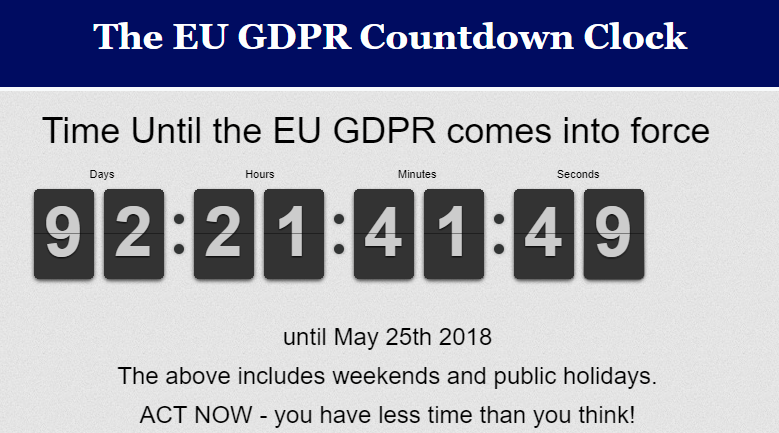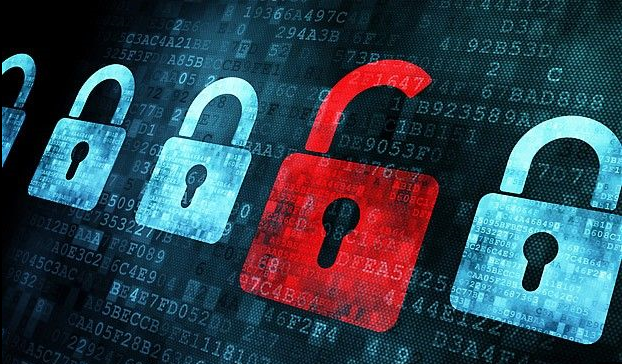Tending Your Garden: Why Information Governance Should be an Ongoing Process in Your Organization: eDiscovery Best Practices
Editor’s Note: Jim Gill’s writing about eDiscovery and Data Management has been twice recognized with JD Supra Reader’s Choice Awards and he holds an MFA in Creative Writing from Southern Illinois University, Carbondale. Before working in eDiscovery, Jim taught college writing at a number of institutions and his creative work has been published in numerous national literary journals, as well as being nominated for a Pushcart Prize.
Jim’s post below highlights the importance of a strong information governance program and how creation of a data map can be a key component to that IG program. Complying with the management requirements of personal data in Europe’s impending General Data Protection Regulation (GDPR) will make information governance even more of a priority than ever as Tom O’Connor and I discussed in last week’s webcast.
Just south of San Francisco lies the Filoli mansion, built in 1916 for the Bourn family, and then sold to the Roth family in the 1930s. During that time, the formal gardens gained worldwide renown, and in 1975, the family donated the house and gardens to the National Trust for Historic Preservation.
This month, I was visiting a friend who is the head of horticulture there and was asking about the seasonal planning of the garden and if they use landscape maps, or if it’s up to the garden managers to decide what to plant and maintain. The answer, as most answers tend to be, involved a little of both. But he told me that they no longer had access to a lot of the maps, because they had recently upgraded their computers, and the new machines couldn’t read the old files.
“Did you switch from Mac to PC?” I asked.
“No, we just went with the latest Macs, but they can’t read the old Apple files.”
As computing has shifted more to mobile-based platforms, the issue of legacy document accessibility comes along with that shift. Certainly, it’s nothing new, as system updates with both hardware and software have become increasingly frequent over the last 20 years. But often there was a built-in reverse compatibility – the newest machines could read older software versions but not the other way around.
To add even more complexity, Apple has so far made the decision to keep its mobile iOS platform separate from its desktop/laptop OS. In an article in Time, written in December 2016 by Tim Bajarin, he states, “Keeping two separate operating systems makes sense for Apple, enabling the company to offer a more basic and approachable OS for mobile users, with more powerful software for pro buyers.” But he continues with his belief that “both everyday consumers and business users will embrace so-called “2-in-1” computers, which can function as both a tablet and a laptop-with-keyboard.”
When I asked my friend what Filoli was planning to do about the old maps, he simply smiled and said, “we’re not exactly sure yet.” Mainly, they’d just started creating new maps using the new programs, which at a small organization like his, will probably work just fine.
But it raises some interesting considerations when thinking about information governance and eDiscovery policy in a larger corporate setting.
First, in the same way that the Filoli gardeners used maps to understand the property’s landscape, organizations should create data maps in order to learn the same about their data landscape. What types of data are being stored, where is it stored, when was it created, and in the case of hardware and software updates, will there be compatibility issues.
Second, once a data map is created, policies should be created surrounding retention and storage. If you have older files that can’t be opened, one should question whether it’s even necessary to keep it around. Because storage is moving to the cloud and is becoming more and more affordable, many find it easier to simply just keep everything. But this can lead to issues down the road should litigation arise.
Finally, hardware and system updates are a great time to bring your organization’s data management program up to speed. Before moving old files over into a new system (such as Office 365), it could be beneficial, especially in the long term, to clean house before moving. However, this can be easy to put off, it takes extra time and effort, and if you’re in the middle of a move, being proactive about defensible deletion isn’t often top of mind. It’s the same reason why after you move into a new house and start unpacking boxes, you’re often left shaking your head and thinking, why did I bring this?
Even if you’re not planning to upgrade hardware or software platforms anytime soon, it is inevitable that your organization will do so. And in this day and age, the space between upgrades continues to grow narrower all the time. It may be a good idea to use the “off time” to begin the process of creating a data map, as well as information governance policies and contingencies, so that when the day comes for that upgrade, you won’t have to recreate some things from scratch, while still feeling compelled to carry around the outdated and inaccessible files.
So, what do you think? Does your organization have a data map that is periodically updated? Please share any comments you might have or if you’d like to know more about a particular topic.

Sponsor: This blog is sponsored by CloudNine, which is a data and legal discovery technology company with proven expertise in simplifying and automating the discovery of data for audits, investigations, and litigation. Used by legal and business customers worldwide including more than 50 of the top 250 Am Law firms and many of the world’s leading corporations, CloudNine’s eDiscovery automation software and services help customers gain insight and intelligence on electronic data.
Disclaimer: The views represented herein are exclusively the views of the author, and do not necessarily represent the views held by CloudNine. eDiscovery Daily is made available by CloudNine solely for educational purposes to provide general information about general eDiscovery principles and not to provide specific legal advice applicable to any particular circumstance. eDiscovery Daily should not be used as a substitute for competent legal advice from a lawyer you have retained and who has agreed to represent you.







